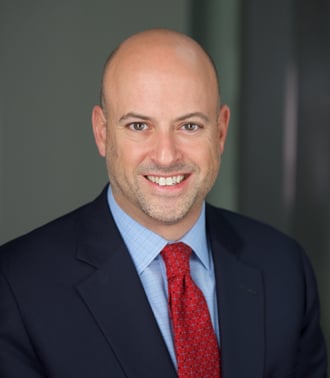Sequenced Discovery in Mass Tort Litigation
In the often-quoted words of the Honorable Richard A. Posner, “the courtroom is not the place for scientific guesswork, even of the inspired sort. Law lags science; it does not lead it.” Rosen v. Ciba-Geigy Corp., 78 F.3d 316, 319 (7th Cir. 1996). This sentiment is of particular importance in mass tort litigation (e.g., toxic tort and pharmaceutical personal injury cases), because without admissible general causation evidence, plaintiffs’ claims fail as a matter of law and the defendant is entitled to summary judgment. The problem in mass tort litigation, however, is that it is common for parties to engage in years of expensive litigation before the issue of general causation is presented to the court.
This article focuses on sequenced discovery—an underutilized tool that permits courts to focus initial discovery on general causation. Sequenced discovery front-loads the issue of general causation and prevents plaintiffs from dragging out litigation without having been put to the test of proving that the product at issue can cause the alleged injury. As United States Senior District Judge Paul A. Magnuson explained, “targeted discovery and resolution of the issue of general causation serves the interest of all parties and the Court, promotes judicial efficiency, and prevents the potential waste of the parties’ and the Court’s resources.” In re Viagra Prods. Liab. Litig., MDL No. 1724, slip op. at 1 (D. Minn. June 30, 2006).
Sequenced Discovery Is Particularly Appropriate in Mass Tort Litigation
Initially, a judge may be wary of sequencing discovery because she has seen the successful resolution of thousands of (less complex) tort cases without taking this less-common discovery approach. Therefore, it is important to explain to the court that mass tort litigation is different from traditional tort cases; in mass tort litigation, a plaintiff is required to establish general causation through expert witnesses. Although mass tort litigation—as indicated by the name—includes numerous plaintiffs, the issue of general causation applies universally to all plaintiffs. It is important to educate the court that focusing initial discovery on general causation is an efficient means of establishing a ruling that will stand from case to case.
The Federal Rules of Civil Procedure and Manual of Complex Litigation Support Sequenced Discovery
The Federal Rules of Civil Procedure recognize that litigation is not one-size-fits all, and thus vest courts with “broad discretion to tailor discovery” and to dictate “the timing and sequence of discovery.” Crawford-El v. Britton, 118 S. Ct. 1584, 1598-99 (1998). A defendant involved in mass tort litigation should outline for the court that Rules 16 and 26 grant the court the power to sequence discovery, when appropriate (i.e., mass torts). Specifically, Rule 26 authorizes courts to issue orders limiting discovery to certain matters and setting the timing and sequencing of discovery. See Rule 26(b)-(d), (f). Similarly, Rule 16 encourages courts to establish early control over litigation and it authorizes courts to adopt special procedures for managing complex actions. See Rule 16(a), (c).
Courts have interpreted Rule 26 as placing a “duty” on them to sequence discovery if an issue—e.g., general causation—may resolve the entire case without the need for certain discovery.
A defendant in mass tort litigation should also direct the court to the Manual for Complex Litigation (Fourth), which encourages judges to consider phasing, sequencing, or targeting discovery. Manual for Complex Litigation (Fourth), § 11.422 at 54-55 (2004). It is important to ensure that the court understands that general causation is a “pivotal” issue in the mass tort case pending in front of her, and that addressing it first has the potential to preempt the need for additional discovery.
Courts Across the Country Have Sequenced Discovery with Great Success
In the Viagra litigation, for example, Judge Magnuson ordered (with the parties’ agreement) that “[t]he first phase of discovery for all cases shall be focused on the sole issue of general causation—whether Viagra® is capable of causing non-arteritic anterior ischemic optic neuropathy (NAION) or other ocular conditions allegedly suffered by Plaintiffs in this MDL” and the court stayed “[a]ll fact and/or expert discovery on issues other than general causation.” In re Viagra Products Liability Litigation, MDL No. 1724, slip op. at 1-2 (D. Minn. June 30, 2006). The court explained that early resolution of general causation—a threshold and potentially dispositive issue—was consistent with what the Manual for Complex Litigation (Fourth) recommends. Id.
Judge Magnuson’s decision to sequence discovery proved to be beneficial in that he ultimately granted the defendant’s motions to exclude all of plaintiffs’ general causation experts, and thus he granted the defendant’s motion for summary judgment. In re Viagra Prods. Liab. Litig., 658 F.Supp.2d 950, 956, 968 (D. Minn. 2009) (MDL No. 1724). During the general causation phase of discovery: the parties produced less than one million pages of documents; the parties deposed five fact witnesses; and the remainder of general causation discovery related to plaintiffs’ four expert witnesses and defendant’s three expert witnesses. This may sound like a lot of discovery, but it pales in comparison with the total amount of discovery in other mass tort litigation. For example, in the Vioxx litigation, the parties produced over 54 million pages and there were over 1,800 depositions, In re Vioxx Prod. Liab. Litig., 2007 WL 3354137, at *4 (E.D. La. 2007) (MDL No. 1657), and in the breast implant litigation the parties produced 10 million pages and there were approximately 225 depositions. In re Dow Corning Corp., 187 B.R. 919, 924 (E.D. Mich. 1995).
Similar to the Viagra litigation, in the recent Zoloft birth defect product liability multi-district litigation, the court granted defendants’ motions to exclude the general causation testimony of plaintiffs’ four expert witnesses. As the Zoloft multi-district litigation currently sits, plaintiffs do not have any admissible general causation evidence; i.e., they do not have an expert witness who can testify that Zoloft can cause the alleged injuries in humans. As a result of these decisions, the Zoloft court stayed all remaining discovery, and it remains to be seen how the litigation will proceed. However, in cases similar to Zoloft, the courts have denied plaintiffs’ request to disclose a new expert; the Daubert process is not a dress rehearsal. See Winters v. Fru-Con Inc., 498 F.3d 734, 743 (7th Cir. 2007). The parties in the Zoloft litigation engaged in general causation discovery simultaneously with other fact and expert discovery. Thus, the parties and the court expended substantial time and money on issues besides general causation—e.g., marketing and regulatory. The Zoloft litigation provides yet another exemplar of the benefit of having plaintiffs establish early in the litigation, prior to other costly discovery, that they have admissible evidence that shows the product at issue can cause the alleged injury
Even if plaintiffs will not agree to sequence discovery, a defendant should not be deterred from raising the issue with the court. See, e.g., In re Incretin Mimetics Prods. Liab. Litig., MDL No. 2452, slip op. at 1 (S.D. Cal. Feb. 18, 2014). After briefing on the issue, Judge Anthony J. Battaglia ordered the following: “[p]laintiffs will narrow all discovery related requests to issues involving general causation. As a result, initial discovery and document production will be limited to whether the requested information has some tendency in logic to prove or disprove whether Defendants’ incretin mimetic drugs cause pancreatic cancer.” Id.
Courts around the country have similarly structured discovery to address the issue of general causation and Daubert early in the litigation. See, e.g., Claar v. Burlington Northern R.R. Co., 29 F.3d 499, 500 (9th Cir. 1994) (early in the litigation, the court issued a case management order requiring plaintiffs to submit affidavits from plaintiffs’ physicians explaining the scientific basis for plaintiffs’ claims); In re Phenylpropanolamine (PPA) Prods. Liab. Litig., MDL No. 1407, slip op. at 1 (W.D. Wash. Mar. 22, 2002) (scheduled expert discovery and Daubert motions within the first year of the MDL); In re Bextra & Celebrex Mktg. Sales Practices & Prod. Liab. Litig., MDL No. 1699, slip op. at 1–4 (N.D. Cal. Mar. 16, 2007) (ordered early expert discovery and Daubert hearings regarding general causation); Avila v. Willits Envl. Remediation Trust, 633 F.3d 828, 836 (9th Cir. 2011) (court issued an order sequencing discovery and requiring plaintiffs to make a prima facie showing of general causation).
Although this article primarily focuses on cases pending in federal courts, several state courts have also required plaintiffs to present causation evidence early in the litigation. See, e.g., Lore v. Lone Pine Corp., 1986 WL 637507, at *4 (N.J. Super. Ct., Law Div., Nov. 18, 1986); In re Love Canal Actions, 145 Misc.2d 1076, 1084 (N.Y. Sup. Ct. 1989), aff’d as modified, 161 A.D.2d 1169 (4th Dep’t 1990); Cottle v. Superior Court, 5 Cal. Rptr. 2d 882, 888-90 (Cal. Ct. App. 1992).
Strategy and Tips for Seeking Sequenced Discovery
We have seen the benefits of sequenced discovery in mass tort litigation. However, that is not to say that counsel should request sequenced discovery in all mass torts. Below are four tips to consider when deciding whether and how to pursue sequenced discovery.
1. Does your mass tort litigation have unique considerations? Counsel should consider whether a court will view her request for sequenced discovery unfavorably due to unique factors in the litigation. For example, if the plaintiffs are elderly or in extremis , a court may be less inclined to delay fact discovery. Similarly, sequenced discovery may not be beneficial in cases where the total volume of discovery is relatively small. Whether to request sequenced discovery does not solely revolve around the likelihood of obtaining a Daubert win on general causation. Counsel needs to determine whether it is appropriate for the particular litigation.
2. Is the court familiar with sequenced discovery? If a court is unfamiliar with sequenced discovery, it is important for counsel to educate the court about the benefits (to all parties) of using sequenced discovery in mass tort litigation. First, counsel should provide the court with the authority to sequence discovery—Federal Rules of Civil Procedure 16 and 26 and the Manual for Complex Litigation (Fourth) § 11.422. Second, counsel should explain to the court that in similar cases courts around the country have used sequenced discovery with great success. Third, counsel should explain to the court the potential pitfall that will occur if discovery is not sequenced ( i.e. , needless money and time spent on lengthy discovery).
3. What is your likelihood of success? Before asking the court to delay other discovery, counsel should consider the strength of defendant’s challenge to plaintiffs’ general causation evidence. Simply put, if you are asking the court to put off other discovery, you must at least bring a credible challenge.
4. What is the practical impact of success? Before you convince the court to order sequenced discovery, counsel should consider its impact on the entire litigation, including other state court venues in which similar claims are filed. If the court’s ruling is applicable only to the multi-district litigation, while other state courts take different approaches, the benefits of sequenced discovery diminish. In fact, sequenced discovery may prove to be more costly and burdensome if the company is forced to produce documents and witnesses multiple times.
Conclusion
In mass tort litigation, pursuing sequenced discovery that first focuses on general causation can lead to early resolution of litigation and can save unnecessary expenditures of time and money. Most importantly, it forces plaintiffs to demonstrate early in the litigation that the current state of science has established that the product at issue can cause the alleged injuries. After all, law is supposed to follow science; not lead it. If a plaintiff fails to identify admissible general causation evidence, the defendant is entitled to summary judgment. The key for defendants is to structure discovery to get this issue in front of the court as early as possible.
» Read the full article on Product Liability Law & Strategy (subscription required).
Reprinted with permission from the January 2015 edition of the Product Liability Law & Strategy© 2015 ALM Media Properties, LLC. All rights reserved. Further duplication without permission is prohibited, contact 877-257-3382 or reprints@alm.com.



